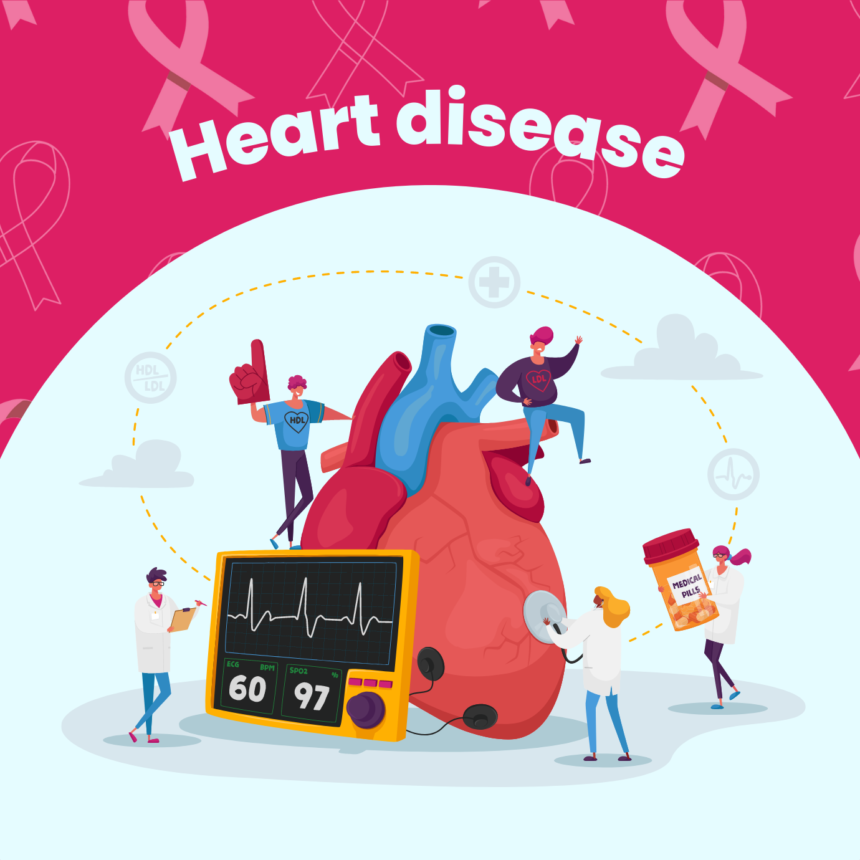This informative article delves into the importance of cholesterol management in maintaining heart health and offers insights into balancing the lipid profile to reduce the risk of heart disease.
- Understanding Cholesterol: The article starts by explaining what cholesterol is and its role in the body. It distinguishes between “good” cholesterol (HDL) and “bad” cholesterol (LDL) and their impact on heart health.
- Cholesterol and Heart Disease: Readers learn about the connection between high LDL cholesterol levels and the development of atherosclerosis, which can lead to heart attacks and strokes.
- Ideal Cholesterol Levels: The article provides guidelines on optimal cholesterol levels, including target levels for LDL cholesterol, HDL cholesterol, and triglycerides, to help readers assess their lipid profile.
- Factors Affecting Cholesterol: It discusses various factors that can influence cholesterol levels, such as genetics, diet, physical activity, and lifestyle habits.
- The Role of Diet: The article emphasizes the importance of a heart-healthy diet, including foods low in saturated and trans fats, to reduce LDL cholesterol levels and promote heart health.
- Exercise and Cholesterol: Readers gain insights into the positive impact of regular physical activity on cholesterol levels, as exercise can increase HDL cholesterol (the “good” cholesterol) and improve overall lipid profile.
- Smoking and Cholesterol: It highlights the harmful effects of smoking on cholesterol and its association with an increased risk of heart disease.
- Managing High Cholesterol: The article discusses lifestyle modifications as the first line of defense in managing high cholesterol levels. It encourages readers to work with healthcare professionals to develop personalized cholesterol-lowering plans.
- Medications and Treatment: For those with persistently high cholesterol or specific risk factors, the article touches on the role of cholesterol-lowering medications as part of comprehensive treatment strategies.
- Monitoring and Follow-up: Readers are advised on the importance of regular cholesterol screenings to monitor progress and make necessary adjustments to maintain a balanced lipid profile.
- Cholesterol and Different Age Groups: The article briefly addresses cholesterol management for different age groups, such as children, adults, and seniors.
- Addressing Misconceptions: The article dispels common misconceptions about cholesterol, such as the belief that all cholesterol is harmful, and clarifies the difference between dietary cholesterol and blood cholesterol.
- Importance of Overall Heart Health: It concludes by emphasizing that managing cholesterol is just one aspect of overall heart health, and adopting a comprehensive approach that includes healthy lifestyle choices is essential for reducing the risk of heart disease.
“Cholesterol and Heart Health: Balancing the Lipid Profile” provides readers with a comprehensive understanding of cholesterol’s role in heart health and the importance of managing lipid levels to prevent heart disease. By offering evidence-based strategies and emphasizing the significance of maintaining overall heart health, the article empowers readers to take charge of their cholesterol levels and work towards a heart-healthy lifestyle.
